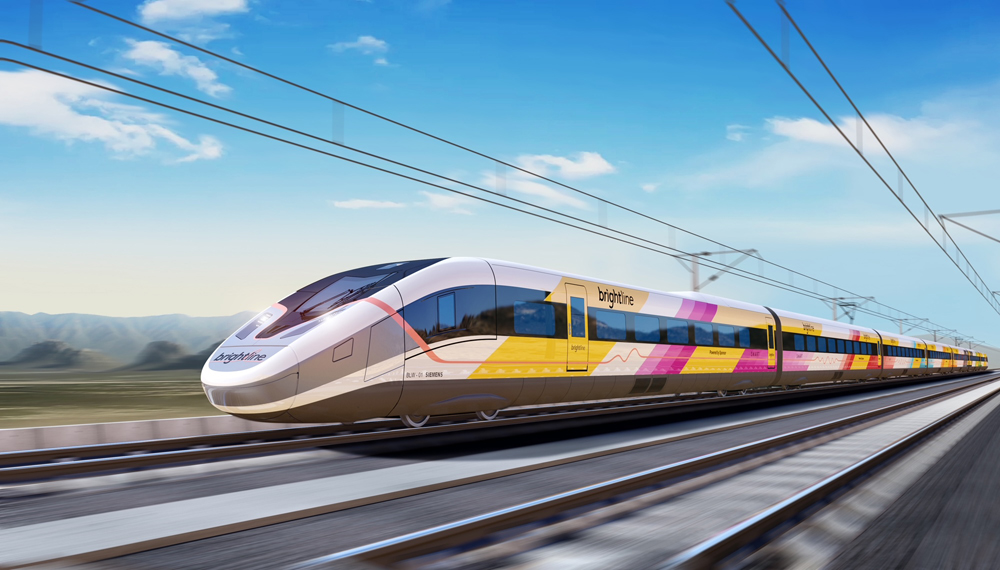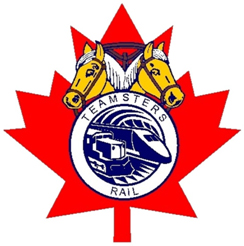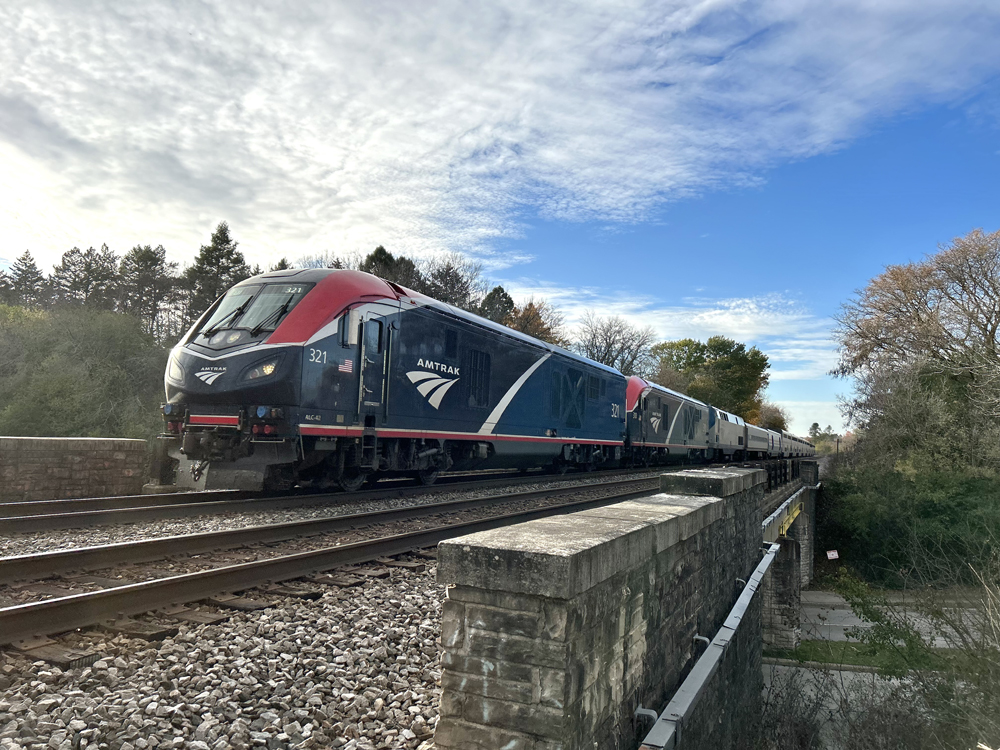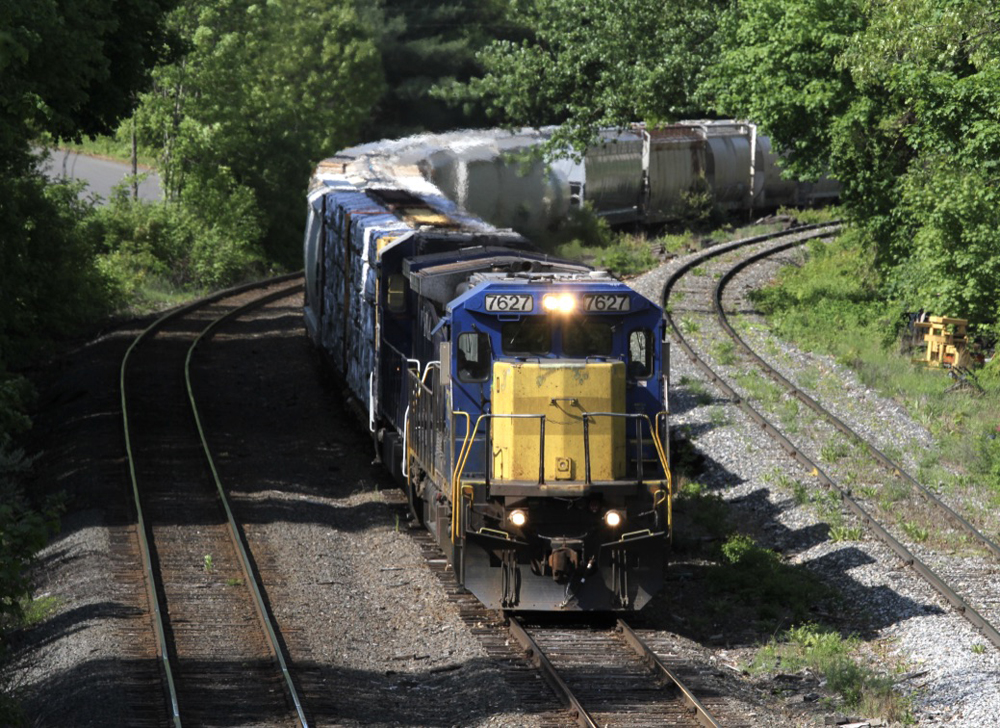
BOCA RATON, Fla. — CSX Transportation put a lot of effort into upgrading newly acquired property Pan Am Railways in 2022. That effort will continue this year, Ed Sparks, the railroad’s chief engineer, bridges, design, and construction, said Saturday.
The plans for the former Pan Am trackage in New England was just one part of a wide-ranging review of projects Sparks outlined during the final day of the 44th National Railroad Construction and Maintenance Association Conference at The Boca Raton resort.
Prior to its acquisition by CSX, Pan Am Railways had been “very good” at acquiring grants for infrastructure work, Sparks said, and CSX will be performing the work this year funded by one of those grants — a $17.5 million CRISI (Consolidated Rail Infrastructure and Safety Improvements) grant to upgrade 75 mainline miles between Yarmouth and Waterville, Maine.
That work will entail 400,000 linear feet of new welded rail; upgrades at 47 grade crossings and new surfaces at 42 private crossings; a 4,800-foot siding extension; replacement of 25 switches; modernization of signal equipment at three existing interlockings and installation of three new control points; addition of additional wayside locations that will extend the signal system by 16 miles; and replacement of 441 timbers on eight bridge decks.
This is far from the only work on the agenda for the former Pan Am. CSX is investing more than $100 million in improvements to address track speed, track clearances, and yard conditions. And two other CRISI grants address 800,000 feet of new rail, 55,000 crossties, 65 switch upgrades, and more than 110 crossing upgrades.
“It’s a target-rich environment for improvement,” Sparks said, showing a photo of Pan Am’s heavily overgrown Worcester main line prior to acquisition by CSX, followed by several photos of a more manicured right of way: “That’s now the Worcester main line after six months of work. What a difference a little bit of funding and some of your [contractors’] horsepower make. In this area, around the Wachusett Reservoir, we’ve increased speed to 25 mph. But elsewhere, that’s just the beginning. The intent is to go 40, then 49. We’ll see where we end up.”
Among other project updates receiving updates were two in Chicago: P-3, the Forest Hill Flyover [see “Officials are out in force ..,” Trains News Wire, Oct, 25, 2022], and WA-11, the Dolton Interlocking.
At Forest Hill, part of the massive 75th Street Corridor project, “We’re in the process of constructing the shoofly to relocate our double main,” Sparks said. “We’ve installed eight diamonds on the alternate route. We’ll be moving our tracks out of the way so we can construct the fill and the bridge to grade-separate CSX — or actually the Baltimore & Ohio Chicago Terminal Railroad — and Metra, the Belt Railway of Chicago, and Norfolk Southern. … That landscape will be transforming for the better.”
The Dolton project, to reconfigure CSX, Union Pacific, Indiana Harbor Belt, and Norfolk Southern connections, should be advertised in the second quarter of this year, Sparks said. “That one is coming up soon, working its way through Illinois DOT and
Technology programs
Sparks also highlighted areas in which CSX is advancing its use of technology. Among them:
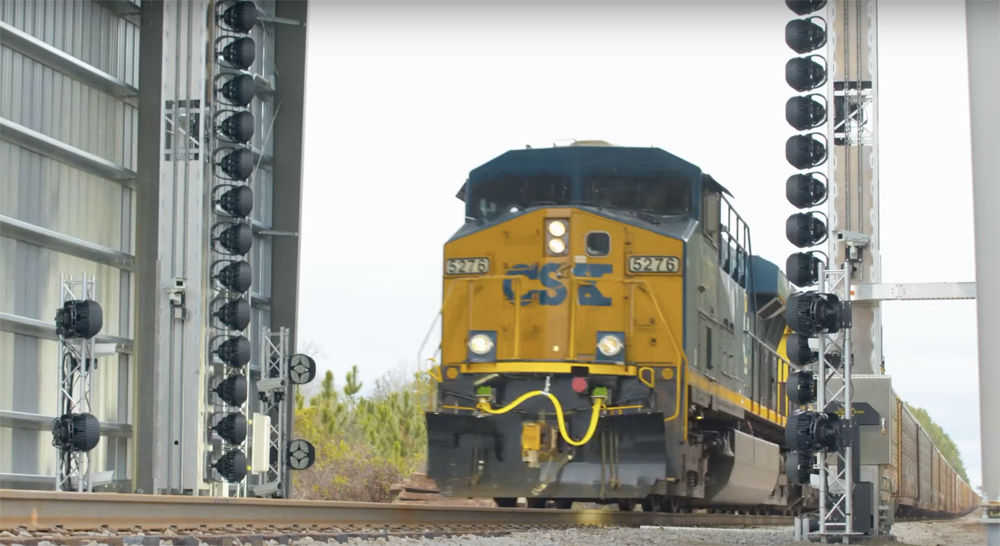
— The increasing use of inspection portals, the carport-like structures that trains pass through at track speed, with high-resolution cameras performing equipment inspections. The railroad featured the first such portal, in Waycross, Ga., in this video released last year.
“We’ve got a few of them on CSX, with more to come,” Sparks said. “… At 60 mph, these high-speed cameras are taken tens of thousands of photographs and then stitching them together. Using machine learning, the eye, and all that, a train approaching our yard 25 miles away will have a full inspection and they will know which cars can have issues, and those can be fixed quickly, as opposed to parking the train, walking the train, and then 12 hours later, kicking out some cars … It’s meant to speed things up, and we’re finding a lot of things before they find us.
“It’s some pretty neat technology I think you’ll see dispersed throughout the network.
— Testing the use of drones for track inspection, specifically at its hump yards.
“I was skeptical, to say the least, about this,” Sparks said. “… One of the most hazardous and difficult places to inspect track is the hump yard, the bowl of the hump. First of all, you never want to shut it down; trying to get a few clear tracks so you can walk the track and inspect it is a challenge. So the thought behind this is have a drone that is sitting on the hump tower … and whenever a track is clear, this flies the track. And it it can pick up cross level, gauge, gap switch points, broken bars, things of that nature. It’s amazingly details. Our technology team and [geographic information system] group are working on this to try to turn it into reality. Not to replace the track inspector, but to augment, and make sure that track inspection is even better, and reduce the risk.”
— A growing fleet of autonomous track inspection cars, from five to eight.
“These run at track speed, usually on our intermodal trains,” Sparks said., “and provide near real-time data. We used to run a track geometry car every three months across the territory; now you’re getting one about every three days. So you can see the defects grow and you can go after them. That’s how you get from one or two track-caused defects down to zero. CSX is not alone in that, but it is something we’ve embraced. Again, it does not replace the track inspectors. It allows the track inspectors to fix things as opposed to just finding them.”






